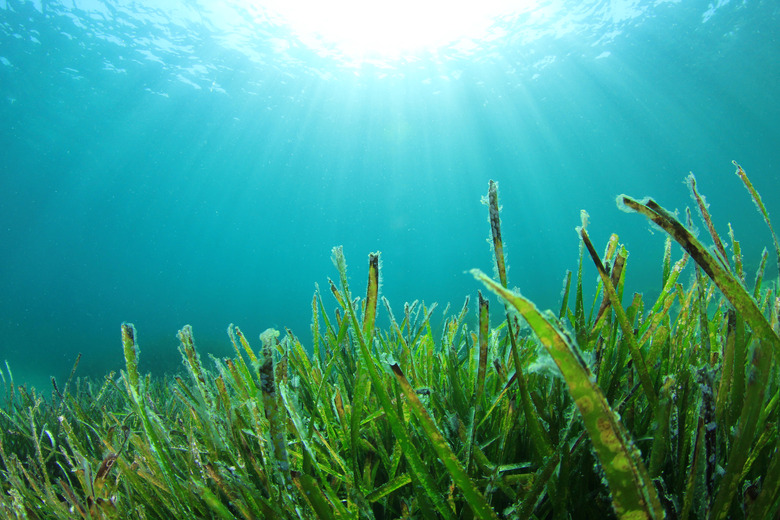Roles Of Cyanobacteria In The Ecosystem
Also known as blue-green algae, cyanobacteria are single-celled organisms that photosynthesize, deriving energy from sunlight. Cyanobacteria have been present on Earth for perhaps as long as 4 billion years. Due to their ability to produce oxygen, cyanobacteria played a pivotal role in changing the composition of the planet's atmosphere. Blue-green algae has adapted to exist in most ecosystems, including fresh and salt water, soils and rocks.
Atmosphere
Atmosphere
Cyanobacteria were among the earliest life forms on the Earth. Sometime between 2 and 4 billion years ago, cyanobacteria developed the capacity for photosynthesis, which produces oxygen as a byproduct. As cyanobacteria proliferated billions of years ago, the Earth's carbon dioxide-rich atmosphere gradually changed to include increasing amounts of oxygen. Cyanobacteria account for approximately 20 to 30 percent of the photosynthesis on the planet today, and continue to play an important role in the composition of the atmosphere.
Chloroplasts
Chloroplasts
Cyanobacteria also played a key role in the development of plant life. A chloroplast — which exists within a plant cell and produces food for the plant — are actually cyanobacteria. Hundreds of millions of years ago, plant cells evolved with resident cyanobacterium in a process called endosymbiosis. Much like mitochondria in animal cells, chloroplasts are genetically unique from their parent cells.
Nitrogen Fixing
Nitrogen Fixing
The ability to process atmospheric nitrogen and render it into an organic form is also possessed by cyanobacteria. This process, called nitrogen fixing, is very important for the growth of many types of plants. Some plants have evolved to form symbiotic relationships with it, with cyanobacteria residing within the plant roots. In addition to such plants, cyanobacteria has formed similar relationships with many types of fungi, resulting in the existence of lichens. Cyanobacteria also fixes nitrogen in soils, coral reefs and various water environments, making nitrogen available throughout a wide range of ecosystems.
Blooms
Blooms
At times, when provided a water environment that is particularly rich in nutrients, cyanobacteria will produce very large populations, or blooms. Cyanobacteria can also produce toxins that are dangerous to humans and animals. According to the World Health Organization, algae blooms in human water supplies is becoming an increasing problem worldwide. Toxic blooms in lakes can also reduce populations of numerous species due to toxicity or other impacts such as excessive shading.
Cite This Article
MLA
Johnson, Scott. "Roles Of Cyanobacteria In The Ecosystem" sciencing.com, https://www.sciencing.com/roles-cyanobacteria-ecosystem-8193880/. 22 November 2019.
APA
Johnson, Scott. (2019, November 22). Roles Of Cyanobacteria In The Ecosystem. sciencing.com. Retrieved from https://www.sciencing.com/roles-cyanobacteria-ecosystem-8193880/
Chicago
Johnson, Scott. Roles Of Cyanobacteria In The Ecosystem last modified August 30, 2022. https://www.sciencing.com/roles-cyanobacteria-ecosystem-8193880/
